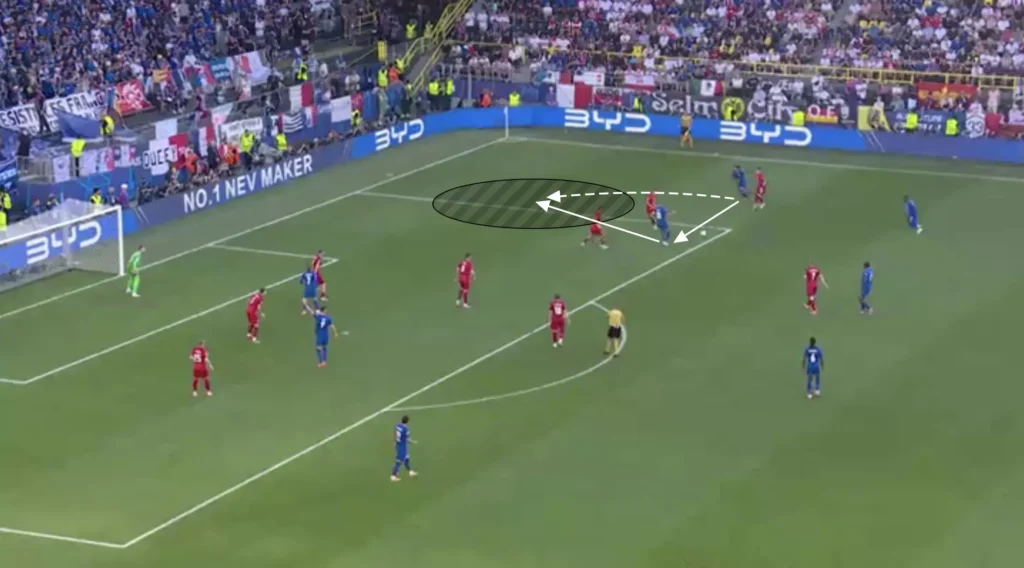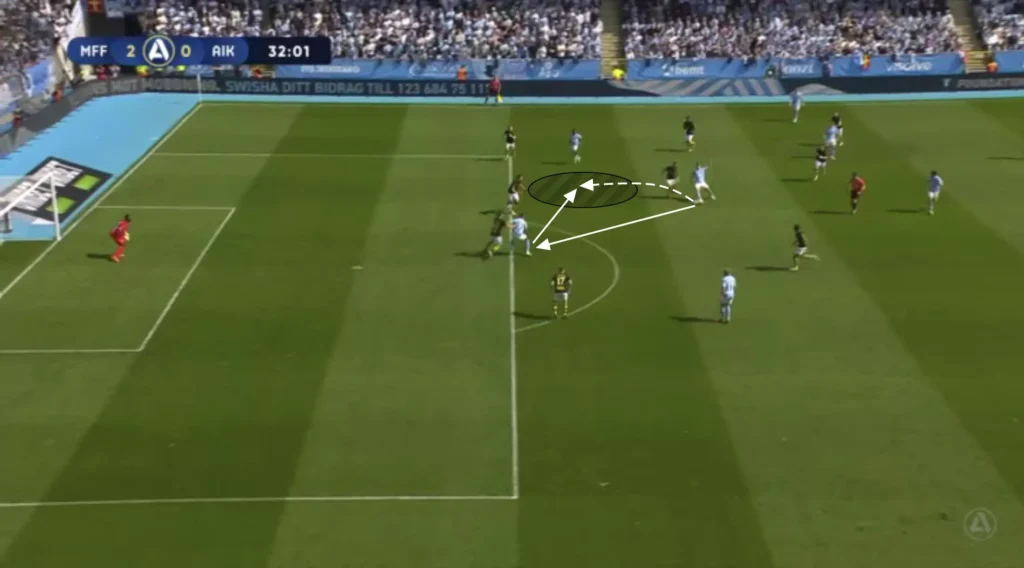In football, some of the most effective tactical tools are also the simplest. The wall pass—also called a one-two, give-and-go, or pass and follow—is a short combination between two players, allowing the ball to bypass an opponent through quick movement and timing. Though it’s a basic concept, the wall pass is a powerful way to break lines, speed up attacks, and exploit tight spaces.
A typical wall pass involves Player A passing to Player B, then immediately making a forward run. Player B returns the ball into the path of Player A, usually with one touch. The simplicity lies in the idea: move the ball, then move yourself—but when timed correctly, it can dismantle a defensive structure with just two touches.

Tactical Purpose
Wall passes serve multiple tactical functions. Most importantly, they help teams bypass individual defenders or entire defensive lines. A well-executed one-two can momentarily disrupt the positioning of the opposition and create space behind their line of pressure.
They also raise the tempo of play. Against low or mid-blocks, where space is limited and defenders are tightly compacted, a quick one-two combination can stretch or unbalance the structure. This gives the attacking team momentum and forces the opponent to make rapid decisions.
Another strength of the wall pass is in tight or high-pressure zones. Rather than relying on risky dribbling or backwards passing, a quick give-and-go allows players to retain control while moving the ball forward. It’s especially useful near the touchline or in central midfield when space is restricted.

Key Components
Several factors must align for a wall pass to work effectively. First and foremost is timing—the passer must immediately continue their run after playing the ball, and the return pass has to arrive at just the right moment. Too early, and the defender has time to recover. Too late, and the move breaks down.
Positioning and awareness are also crucial. The supporting player (the “wall”) should be in a position that allows for a clean one-touch return pass, ideally with an open body shape and an awareness of incoming pressure. Both players need to read the defensive setup and anticipate how the move will unfold.
The final piece is execution. The initial pass must be sharp and accurate, and the return pass needs the right weight and direction to lead the runner into space. Any technical mistake—whether in touch, timing, or decision-making—can kill the move.
Where and When It’s Used
Wall passes are effective in multiple areas of the pitch. In wide areas, they help wingers and fullbacks combine to bypass an opposition fullback or escape pressure along the sideline. In central zones, midfielders use wall passes to break through compact midfields or progress out of build-up.
One of the most effective zones for wall passes is the half-space—the area between central and wide channels. This narrow corridor often has just enough space for a quick combination to get in behind the backline. In the final third, wall passes can help attackers enter the penalty area or create separation from a marker before crossing or shooting.

Defending Against Wall Passes
To defend against wall passes, teams need to maintain compactness and awareness. Defenders must track runners and communicate to avoid being pulled out of position. Cutting the return pass is one method—by staying tight to the wall player and anticipating the layoff.
Zonal teams often rely on structure to manage these combinations, ensuring that runners are picked up and the space behind each line is covered. Aggressive pressing on the wall player can also disrupt the flow and timing of the sequence.
Training Wall Passes
Coaches incorporate wall passes into training using both isolated drills and game-like scenarios. Simple one-two drills between two players help build technical precision and timing. Directional drills that require players to pass and move through gates can train movement patterns and decision-making.
Rondos with added rules—such as mandatory one-twos or combination play—encourage players to recognize when to use wall passes under pressure. In more advanced sessions, coaches integrate wall passes into positional play and team pattern drills, simulating real-match situations where combinations lead to chances.
Conclusion
The wall pass is one of football’s most effective and underappreciated tactical actions. It embodies the essence of quick, intelligent play: fast decision-making, coordinated movement, and precise execution. Whether used to break pressure in midfield, beat a defender in wide areas, or unlock the final third, the wall pass remains a cornerstone of modern combination play.
Simple on the surface but rich in tactical value, it’s a tool that every team—from grassroots to elite level—can benefit from mastering.
